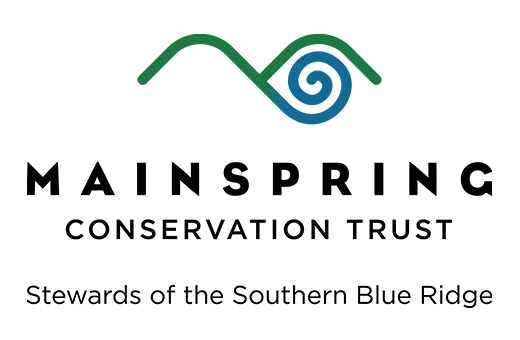Macon County Family Receives LTLT Conservation Award
On November 7, 2009, The Land Trust for the Little  Tennessee (LTLT) awarded its 2009 Ramsey-Brunner Land Conservationist of the Year Award to Myra Waldroop and family; Betty Waldroop, Mary Pittman, Barry Browning, Brian Browning, Nathan Pittman and Paul Pittman. The award which is given to honor individuals who have made significant contributions to land conservation in LTLT’s project area was presented at LTLT’s annual Fall Celebration at Tessentee Bottomland Preserve in Otto.
Tennessee (LTLT) awarded its 2009 Ramsey-Brunner Land Conservationist of the Year Award to Myra Waldroop and family; Betty Waldroop, Mary Pittman, Barry Browning, Brian Browning, Nathan Pittman and Paul Pittman. The award which is given to honor individuals who have made significant contributions to land conservation in LTLT’s project area was presented at LTLT’s annual Fall Celebration at Tessentee Bottomland Preserve in Otto.
On a beautiful fall day, Myra Waldroop along with second and third generation family members received the award in front of the historic farmhouse at Tessentee before a crowd of about 100 people. The 248-acre property conserved by the conservation easement conveyed to LTLT has numerous conservation values. It lies on either side of the Waterfall Scenic Byway which runs from Rosman to Murphy and is adjacent to National Forest System lands. There are prime farmland soils being farmed and productive forest land that is managed for timber harvest, and, last, but certainly not least, it has nearly 4,000 feet of Nantahala River flowing through it and over 700’ of Black Creek.

According to Myra Waldroop’s records, the family has owned property in Rainbow Springs since as early as 1853. “My grandfather, C.W. Slagle, acquired land in Rainbow Springs over a number of years,” said Myra. The family used the property for family vacations for many years. During the 20’s and 30’s the Ritter Lumber Company operated in one of the meadows complete with a thriving lumber town including post office, commissary, hotel and school. A railroad hauled lumber down the river to be shipped away. In 1948, Myra’s father, Carl Slagle, retired to Rainbow Springs, and later, Myra inherited a portion of the her grandfather’s property where both of her daughters now live. There are many stories of four and five generations who have fished, hunted, and gathered with friends and family at “Rainbow”. “Many family traditions live on,” says Myra. “With this long history, my family and I decided we wanted this property protected from development. The LTLT was our solution. We appreciate working with the folks at LTLT. A special thanks to Sharon for her patience as we worked out the details of the Deed of Conservation.”
In her presentation of the award to the Waldroop family, Sharon Taylor stated, “LTLT’s mission is to conserve the waters, forests, farms and heritage of the upper Little Tennessee and Hiwassee River valleys. However, we work with landowners on a purely volunteer basis, so it is somewhat opportunistic. When Myra Waldroop called to say she was interested in conserving a portion of the Family’s Rainbow Springs property, that opportunity fit our mission like a glove. I know that all of the conservation values are important to LTLT, and important to the Family, but the Waldroop Family conserved their land because of their love of the land and the heritage that the land represents.”
 Saving a mountain for our children and grandchildren
Saving a mountain for our children and grandchildren
